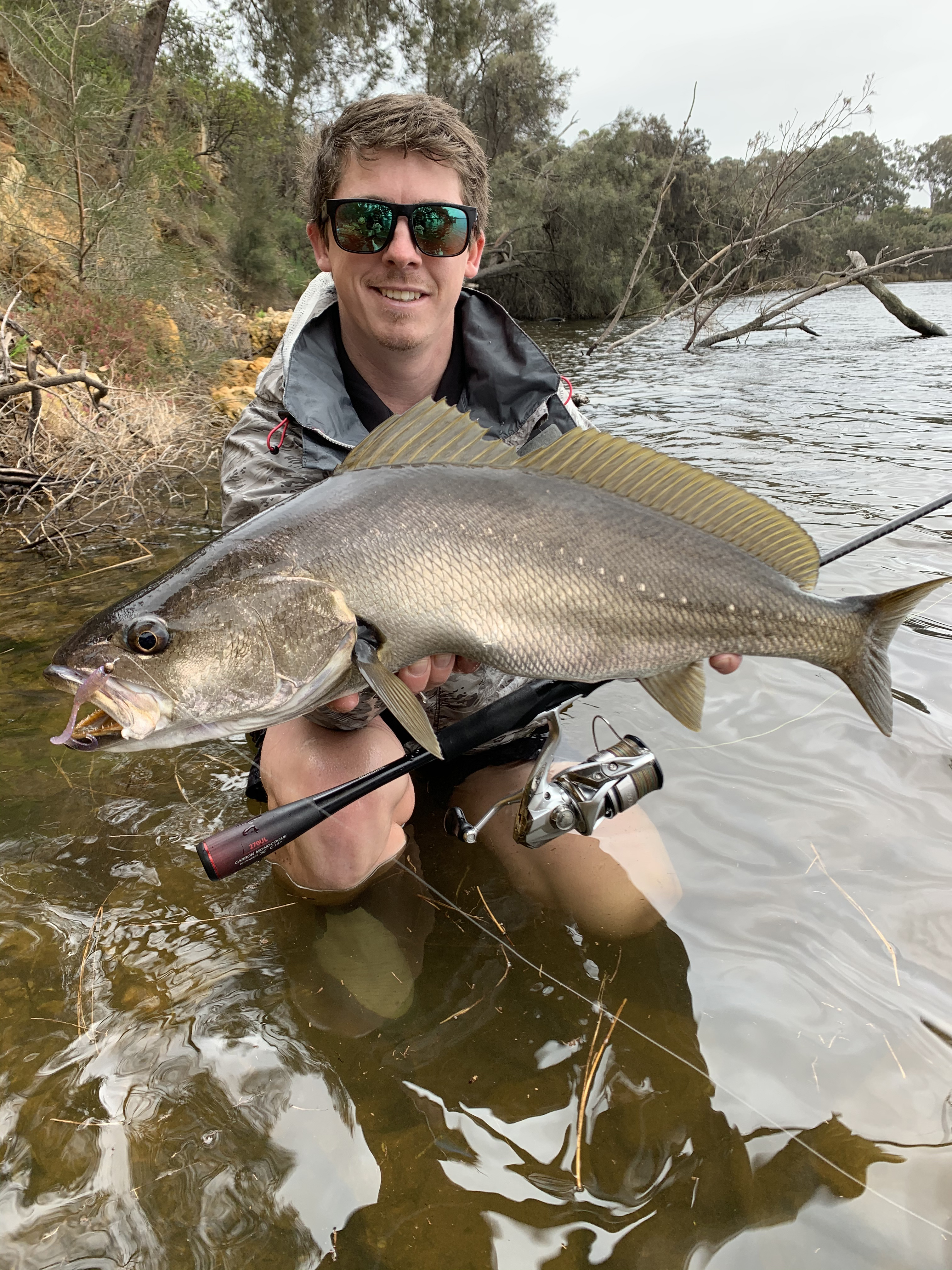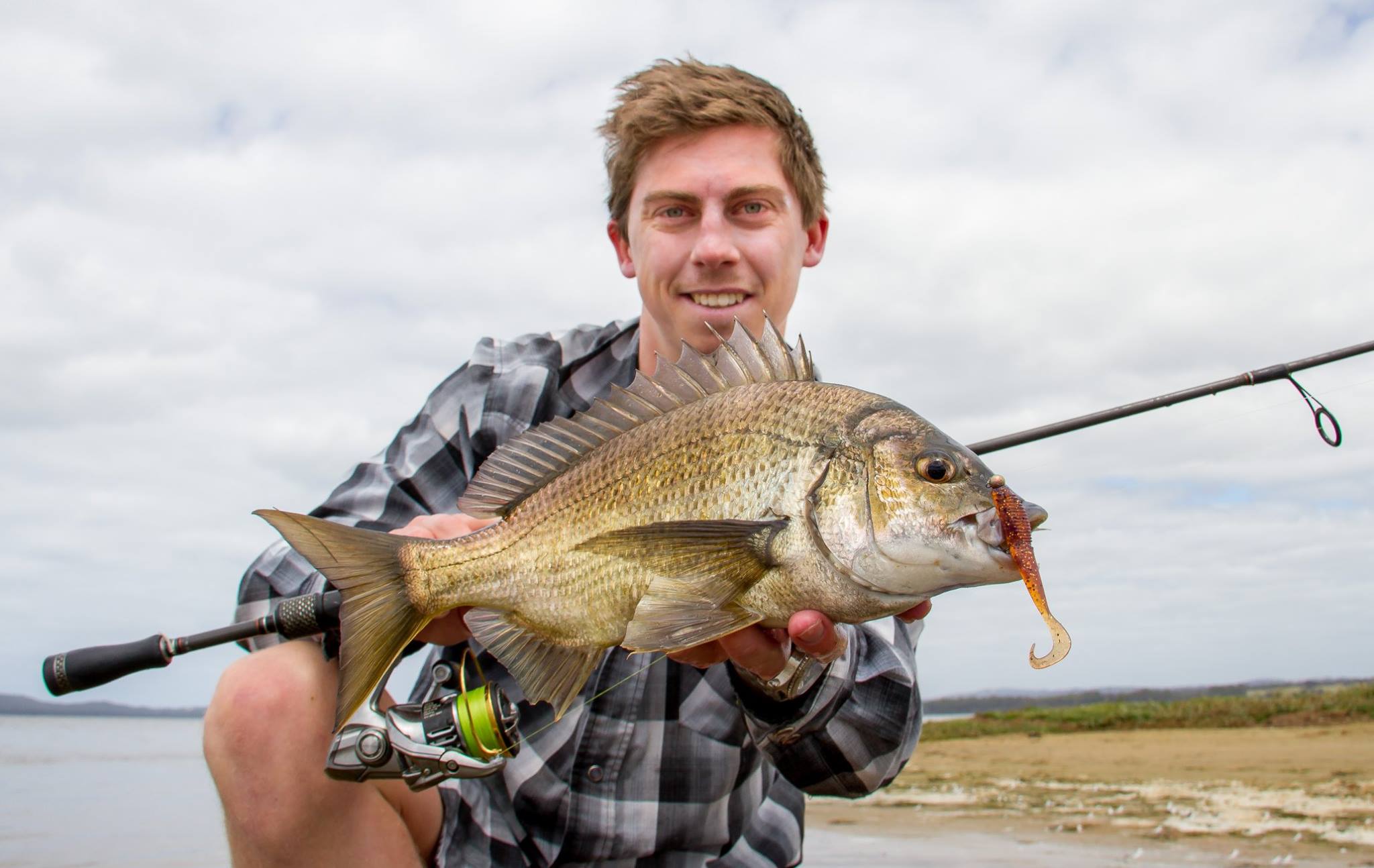
The release of the Squidgies Bio-Tough range has been an absolute game changer for Bream anglers around Australia. Being situated over in Western Australia, the durable nature of these plastics has been especially beneficial when you take into account the swarms of pufferfish we have to contest with in our local waterways - which decimate the average, less durable soft plastics available on the market.
Another factor that makes these such a successful soft plastic lure is how well they have been designed and how refined the action of each plastic is. Having such a great action at slower speeds allows me to decrease my jig head weights and slow the retrieve and sink rate down so I can keep my plastic in the strike zone for longer and as a result, catch more fish and tempting those larger, more intelligent fish to bite.

From a Bream targeting viewpoint, selecting the right Squidgies Bio-Tough Plastic for the situation is crucial. The main variables that I take into account are water depth, colouration of the water, clarity and visibility, and what bait lives in that particular system. As a general rule, if the water is dirty, I will use a darker/solid coloured plastic (such as Pumpkinseed or Watermelon) which has a better silhouette.
I’ll also use a plastic that has more presence in the water like the 100mm Wriggler or 70mm Fish. Sometimes you’ll find you might even land some great by-catch like Flathead and Jewfish!

On the other hand, in a clear, still system where the fish are more than likely to be acting timid, I would use a smaller, more finesse plastic in a natural or more translucent colour, such as a 65mm Grub in Bloodworm colour.
I have used a lot of Bio-Toughs in a range of different situations, with a variety of jig head options and have finally settled on the following to be the perfect matches for most scenarios that suit my styles of fishing. While these are more specific to WA, I hope it helps you in your local.
For the 100mm Wriggler and the 65mm Grub, I run the following jig head weights:
- 1.3g for finesse situations or for water depths under 1.5m.
- 1.8g for water depths above 1.5m and around structure such as bridges, deeper snags, etc. The 1.8g is great for slow rolling the 65mm grub.
- 2.6g if I am slow rolling the 100m Wriggler.
The only difference is that I run a #1 hook on the 100mm Wriggler and a #2 hook on the 65mm Grub.
For the 70mm Fish:
- 1.8g for most situations.
- 2.6g for when I am slow rolling (my preferred retrieve for this profile lure).
Hook size for this profile is usually a #1 hook when targeting larger model fish, however, will sometimes drop down to a #2 hook and run a little stinger hook near the paddle tail for when the fish are nibbling at the tail of the plastic or the fish aren't smashing the plastic hard.

If I were only able to use 2 soft plastics for the rest of my life, it would have to be a 100mm Wriggler in Pumpkinseed, on a 1.8g #1 jig head for the dirtier southern systems and deeper sections of most rivers, and a 65mm Grub in Bloodworm rigged on a 1.3g #2 jig head for those finicky fish and clear waterways. Obviously smothered in S-Factor too!
I hope this helps give you a better idea as to how to rig up and get the best out of your Squidgies Bio-Tough lures.
Tom Schuiling
For more tips and awesome fish, check out Tom's Instragram HERE